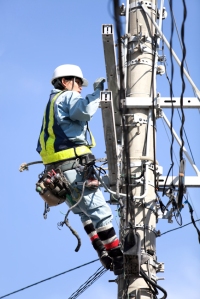Counties Nationwide Invest in More Police Training
June 27, 2012 Leave a comment

Police departments stand to gain much from additional law enforcement training. Check out these rural areas that are investing in various specialized training.
For some police departments, investing in additional training is a financial boon for the entire department. Regular training can lead to insurance discounts, renewed knowledge transferal, and a close-knit department.
Read the following examples of rural areas across the country that employ various sheriff department training courses and safety programs.
- Jasper County in Missouri mandates that all deputies and officers receive extra behind-the-wheel training for braking and evasive maneuvers in both daily driving and high-speed chase scenarios. Officers are required to complete the specialized police training once a year, which secures the department an insurance discount of $14,000.
- The Aiken County Sheriff’s Office and the Aiken Department of Public Safety outside Augusta, Georgia just participated in a two-day law enforcement training for female officers sponsored by the South Carolina Law Enforcement Officers Association. The survival course aims to teach women how to use their strength and physique to defend themselves in different violent attacks.
- Two members of the domestic violence intervention division of Prince George’s County Office in Maryland graduated from the Roper Victim Assistance Academy of Maryland in early June. The training program, which covers victims’ rights and victim advocacy, gave two officers new knowledge to share with the rest of their unit.
- The Mesa County Sheriff’s Department in Colorado received AED devices (Automated External Defibrillator) for their Rural Area Division officers, who often arrive on a scene before ambulances with EMS personnel. The rural police officers were trained how to properly use the life-saving tool, requiring lessons in monitoring heart rhythm and performing cardiopulmonary resuscitation. Those officers who patrol the parks and back country areas said this kind of sheriff deputy training will save hikers, bikers, firefighters, and others out in the wilderness.
As Margaret Moore, an investigator for the Aiken Department of Public Safety, said “As a police officer, anytime there is training available, you should go.”
Would you argue with her? I didn’t think so.


